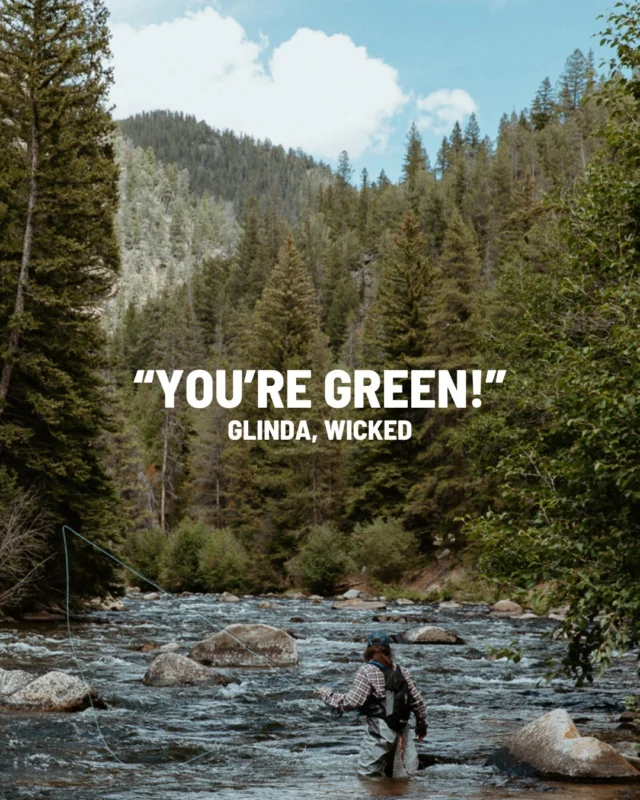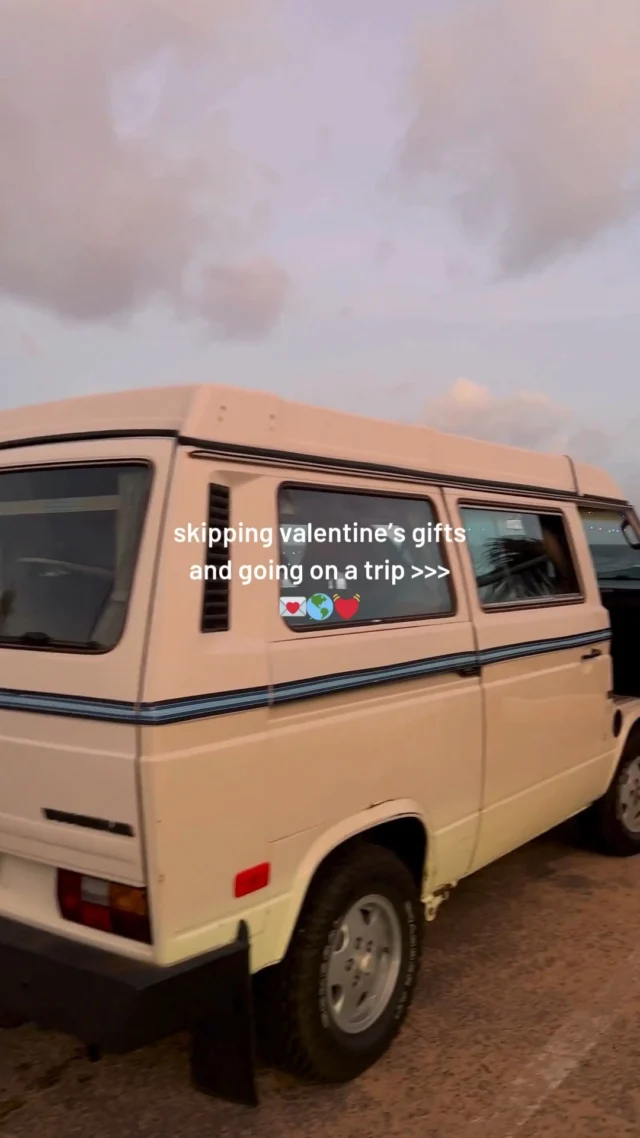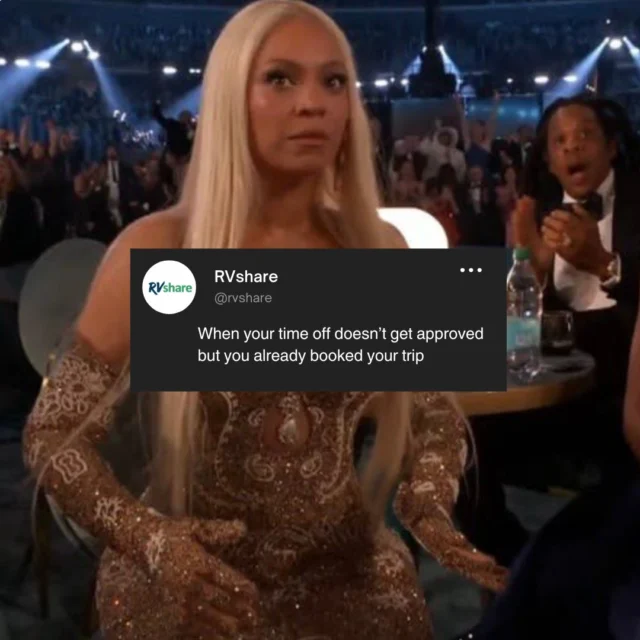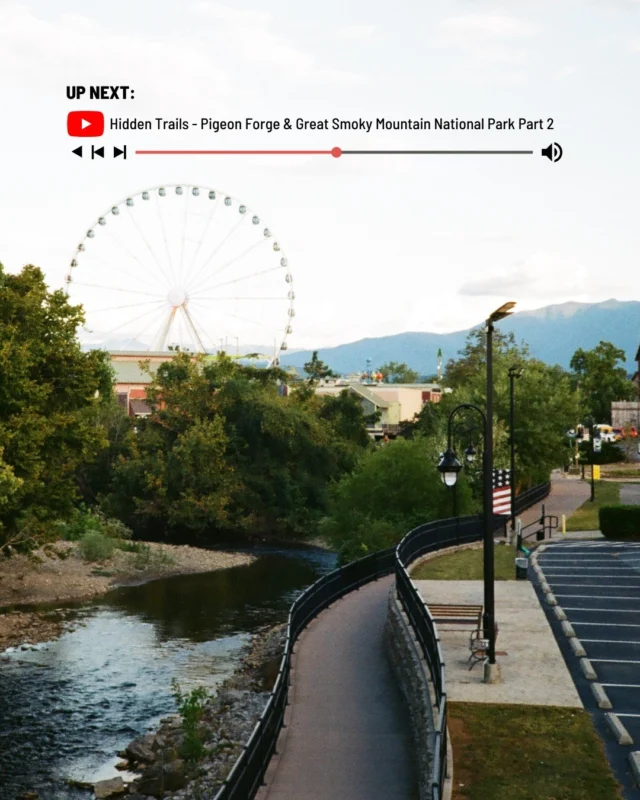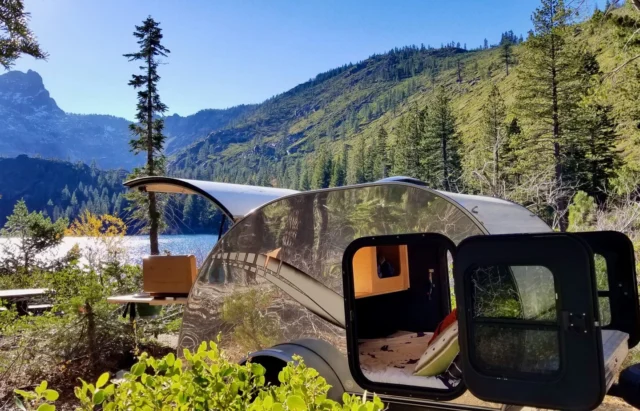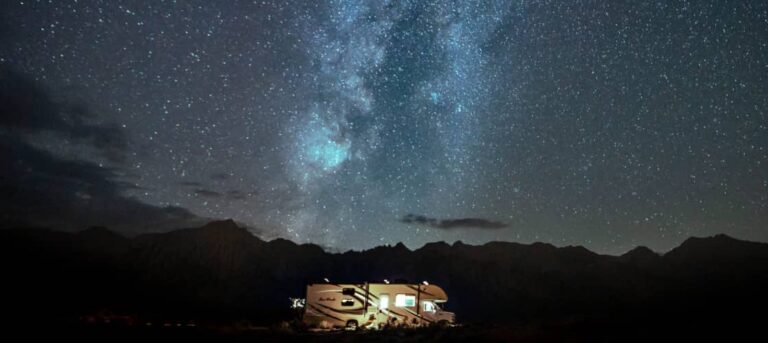
The year may be winding down but there are several noteworthy celestial events that are still to come in 2024. Many of these events can be seen across the U.S. You’ll have the best chance at seeing them from a dark area, away from city lights, like at an International Dark Sky Park. Those are certified by the International Dark-Sky Association for having starry nights, policies to reduce light pollution, and quality outdoor lighting.
You can also look for observatories or astronomy clubs that plan evenings around these celestial events. If you don’t have your own viewing equipment, both of these groups often allow the public to look through their telescopes for free.
And RVing is a convenient way to enjoy these celestial events. After a chilly evening of stargazing, you can retreat to your warm bed nearby for the night. In some areas, you may even be able to simply step outside your RV to see the comets or other celestial bodies … and go inside to warm up whenever you wish.
Orionid Meteor Shower – Sept. 26 – Nov. 22
The Orionids are an annual meteor shower that lasts most of the fall, and the shower is considered one of the most beautiful celestial events of the year. At its peak, there can be about 23 meteors per hour.
How to view: The Orionid Meteor Shower can be seen from both the Northern and Southern hemispheres, between midnight and dawn on clear nights. You’ll want to find a spot away from city lights, and bring a sleeping bag, blanket, or chair. If you’re in the Northern Hemisphere, you’ll want to lie with your feet facing southeast, and you’ll want to face northeast if you’re in the Southern Hemisphere. Give your eyes some time to adjust and begin watching.
The Orionids are best known for their brightness and the speed of the meteors – about 148,000 miles an hour.
Peak date: The peak date for viewing this meteor shower is expected to be October 21. However, there is expected to be a bright moon this year, and viewing may not be as good as it has been in previous years.
RVing Near Orionid Meteor Shower
You can look for this meteor shower all across the country, but it is in the southwestern sky, if you’re in North America. Big Bend National Park is a great option – it’s an International Dark Sky Park. The National Park Service also says it has the darkest night skies of any of the national parks in the lower 48 states.
Rent an RV near Big Bend National Park.
Campground: The Rio Grande Village RV Campground has full hookups and a camp store. Sites are back-in only. The campground has laundry and showers, sells ice year-round, and has year-round staff.
Two Moons – Sept. 29 to Nov. 25
Straight out of a sci-fi movie … Earth will get a second moon for about two months this fall. The “second” moon is actually a small asteroid – about the size of a school bus – which will revolve around our planet in a horseshoe shape for about two months. The asteroid will be small enough that you will need a professional telescope to see it.
How to view: Observatories across the country have telescopes powerful enough to capture the second moon. Wherever you live or choose to camp, you can look up the local observatory and see if you can view the moon there. Some may have planned events. Some, like the Griffith Observatory in Los Angeles, collaborate with local groups each month to share their telescopes, so you can view the asteroid then.
RVing Near Griffith Observatory
Rent an RV near Griffith Observatory.
Campground: There are lots of Los Angeles-area campgrounds where you can stay. Dockweiler RV Park is on the beach, and has hookups, showers, and a laundromat.
Comet Tsuchinshan-ATLAS Closest Approach – Oct. 12 – 19
Some stargazers have dubbed Comet Tsuchinshan-ATLAS the “Comet of the Century,” although other astronomers have warned people to temper their expectations. Regardless, everyone agrees it will be a nice comet to watch this October. The comet makes its way to the inner solar system about every 80,000 years…so it would last have been visible during the time of the Neanderthals.
How to view: There’s a good chance you’ll need binoculars or a telescope to see the comet, although it’s possible you may be able to see it with the naked eye. Look to Leo, the constellation, just after sunset, and then towards Virgo to catch a glimpse.
You’ll have a better chance of seeing the comet in a dark sky location, away from city lights.
Peak date: The comet was viewable in September, but the next peak dates will be in mid-October. This time, stargazers farther north in the U.S. will have a better chance of spotting it.
RVing Near Comet Tsuchinshan-ATLAS Closest Approach
Cherry Springs State Park in Pennsylvania is an International Dark Sky Park that’s well-known for being an excellent spot to view starry skies. The park has an Overnight Astronomy Observation Field with telescope pads, and a Night Sky Public Viewing Area. These viewing areas have lighting restrictions so guests can better view the stars.
Rent an RV near Cherry Springs State Park.
Campground: The Cherry Springs State Park Campground offers rustic camping with no hookups. There is a dump station and potable water. There are showers and a camp store within ten miles of the campground.
Super Hunter’s Moon – Oct. 17
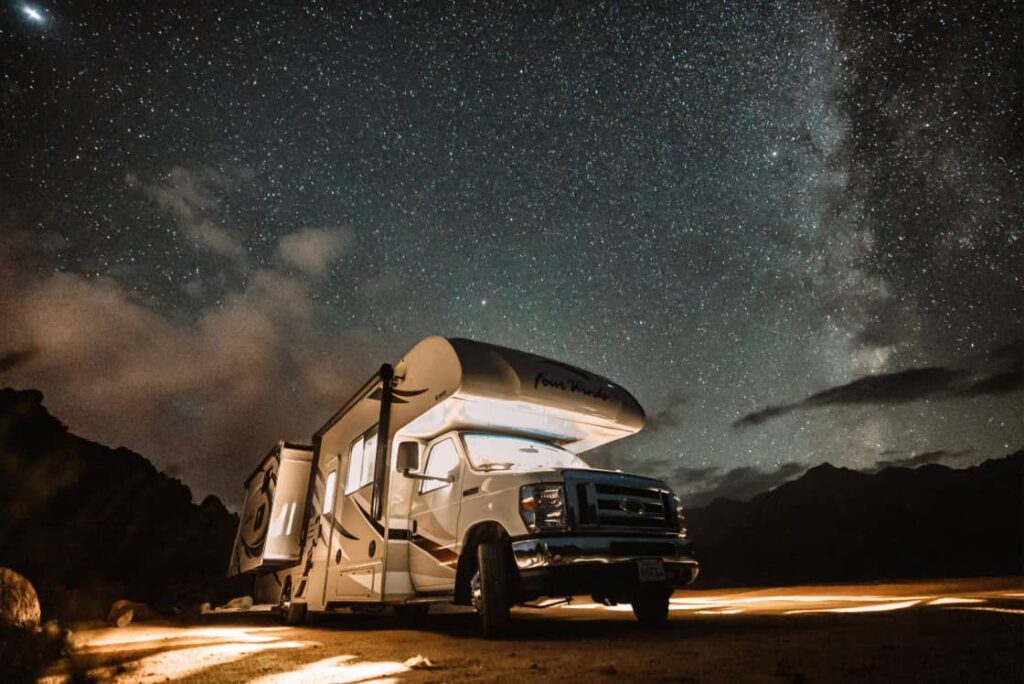
The October full moon is often called the Hunter’s Moon. This is the second Super Full Moon of 2024…and the last one of the year. Although the moon is at its fullest at 7:26 am Eastern Time on October 17, you can still watch its impressive rise that night at sunset.
Depending on the weather, you should be able to see the Super Hunter’s Moon from just about anywhere in the United States.
RVing Near Super Hunter’s Moon
If you want a special celebration around the Hunter’s Moon, the Tippecanoe County Historical Association in Indiana is hosting a Feast of the Hunters’ Moon on October 5-6. This event is a re-creation of the annual autumn gathering of French and Native American people at Fort Ouiatenon. You could camp near Fort Ouiatenon Park, enjoy the celebration, and stick around to view the moon later in the month.
Rent an RV in West Lafayette, Indiana.
Campground: Prophetstown State Park is about 20 minutes from the fort. It has full hookups, a dump station, and showers.
Leonid Meteor Shower – Nov. 17-18
The Leonid Meteor Shower can have up to 15 meteors per hour at its peak, and has some of the fastest meteors in the sky. This year, a waning gibbous moon means you may not see meteors quite as clearly as in past years. But your best chance of catching the meteors will be late at night on November 17 until dawn the next morning. The entire meteor shower goes from November 3 through December 2.
RVing Near Leonid Meteor Shower
You should be able to see the Leonid Meteor Shower from most spots in North America. You’ll have a better chance of seeing it in a dark area, away from the lights of towns and cities. You’ll also want to check weather reports – clouds or an especially bright moon can affect your chance of seeing meteors.
Great Sand Dunes National Park is one of the many national parks that are also International Dark Sky Parks. You can walk out onto the sand dunes at night to see if you can catch a glimpse of the meteors in the vast, open space.
Rent an RV near Great Sand Dunes National Park.
Campground: Although there is camping near the sand dunes, many campgrounds are only open from April through October. Zapata Falls Campground is a BLM area seven miles southwest of the park that offers rustic camping with no hookups and is open year-round.
Geminid Meteor Shower – Dec. 4 – 17
The Geminid Meteor Shower goes for the first half of December, but its peak is predicted for December 13. However, an almost-full moon could mean its light makes the meteors hard to see. The radiant – the area where the meteors seem to radiate from – is highest at around 2 am, but you should be able to see meteors well before that.
Under a dark sky, with no moon or clouds, you could see up to 120 Geminid meteors an hour.
The meteor shower will be viewable from most of the Northern Hemisphere. As with most nighttime celestial events, the best place to view the meteors is in a dark sky area with few city lights around and a wide view of the sky.
RVing Near Geminid Meteor Shower
You can see the meteor shower from most of the U.S. Arches National Park has wide, unimpeded skies where you’ll have a great view of any celestial events. Keep in mind that meteor viewing may be affected by weather and the brightness of the moon. You may want to spend a few extra days exploring Moab and all of the outdoor activities you can do in the part of the country.
Rent an RV near Arches National Park.
Campground: Sun Outdoors Arches Gateway is close to the park and close to Moab. The park has full hookups and pull-through sites. There is a hot tub and pool, a putting green, games, and a dog park.
Jupiter at Opposition – Dec. 7
Our solar system’s biggest planet will be at its closest approach to Earth, a mere 380 million miles from us, at 5 am CDT on December 6. At midnight on December 7 in your time zone (whatever that is), Jupiter will be at its highest in the sky, pretty much where the sun was at noon that day.
You can view Jupiter with the naked eye during that time. You may want to seek out a Dark Sky park to cut down on light pollution. Keep in mind that weather can affect your ability to see the planet.
You’ll be able to see the planet in more detail if you view it through a telescope, and several observatories and stargazing groups are holding events where you can try to see Jupiter.
RVing Near Jupiter at Opposition
One observatory that will hold viewings on December 7 is the Landolt Astronomical Observatory at LSU. The public can come and observe the moon and Jupiter at the observatory, beginning at 8 pm that evening. If the weather is cloudy, the event may be canceled. Admission is free.
Rent an RV near LSU in Baton Rouge.
Campground: There are many campgrounds to choose from in Baton Rouge. The Baton Rouge KOA Holiday is open year-round and has a hot tub, a trampoline park, and a mini golf course. Sites include full hookups, and the park is pet-friendly.
Ursid Meteor Shower – Dec. 21 – 22
The final meteor shower of the year will be more understated than the previous ones listed here. You may see between 5-10 meteors per hour at its peak. Light from the moon may affect how many meteors you can see. Weather can also be a factor.
As with other meteor showers and celestial events, the best place to view this one is away from city lights at a Dark Sky Park or similarly dark location.
RVing Near Ursid Meteor Shower
Great Basin National Park in Nevada is a Dark Sky Park that might be a great location for viewing this meteor shower.
Rent an RV near Great Basin National Park.
Campground: Lower Lehman Creek Campground inside the park is open year-round. There are no hookups or other amenities except vault toilets.
These celestial events are a wonderful reason to enjoy national and state parks, even at night. And RVing is a wonderful way to experience these events, too!

